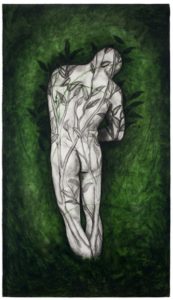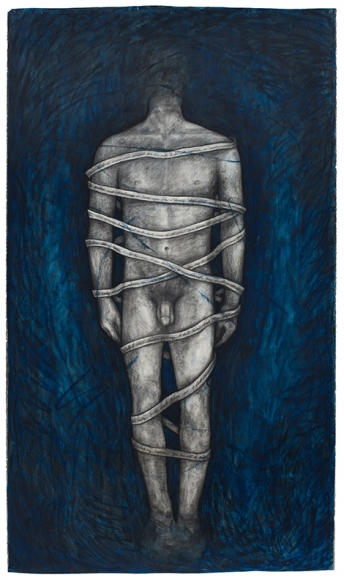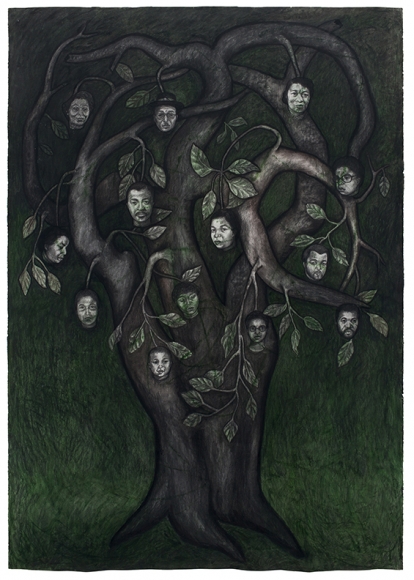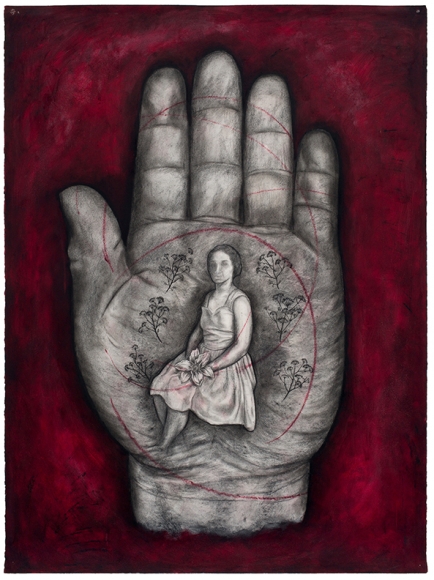
Whitfield Lovell: early works
Rite, 1997
About:
During this early period Lovell worked on large sheets of paper that he layered with oil stick and charcoal. He chose to work in deep, vibrant monochrome that gives the works a dramatic gestural presence, combined with finely executed charcoal drawings that are the forebears of the artist’s ongoing practice. His subjects are often sourced from vintage photographs from family albums as well as anonymous photos.

Tied, 1993
Lovell speaks allegorically through his visual symbols, examining issues of identity, gender, love, death, and loss. Hands contain faces and figures, some mysterious, others easily identifiable. Empty clothes express the presence of absence – spiritual, emotional, or physical – of friends and family members. Lovers kiss. And a head rests on its side atop a mound of flowers, in a reference to both a Mexican burial tradition and a deeply felt family tragedy.

Tree, 1989
Much of the work is personal, even autobiographical, grounded in the artist’s past. Blending narrative and metaphor, Lovell’s work creates meanings that are, as in everything he has done since then, shaded with ambiguity that invites multiple interpretations. And as personal as much of the imagery is, he intended the works to be broadly understood. As he explained in the early 1990s,
“I think it is important for the viewer to bring some of his or her own associations to the work. … I want it to be open enough so that people can interpret and relate the images to their own experiences.”

Hand XIII, 1995
In 27 Hands (1990), a group of open palms, each depicting a single symbol or a motif, including a peace sign, skull and bones, swastika, Turkish crescent and star, dollar sign, Star of David, and male and female gender signs, is set against an atmospheric background of blood reds and rich dark browns. This confluence of color and graphic iconography is emblematic of the artist’s concerns throughout this entire body of work. These themes are further echoed in another composition entitled Tree (1989), in which sinewy branches bear ghostly faces evoking genealogical history instead of fruit or blossoms, in a metaphor for remembrance and foretelling. (text and courtesy: DC Moore Gallery)
